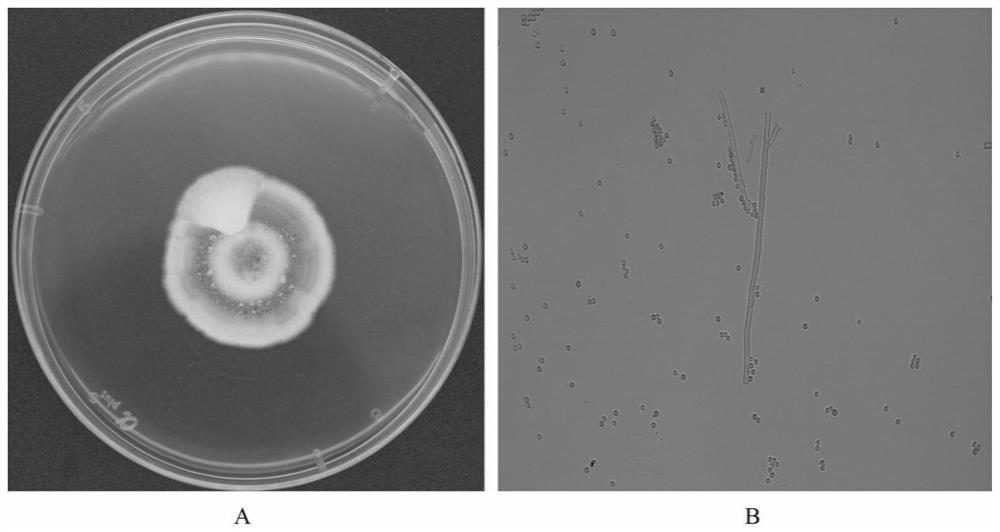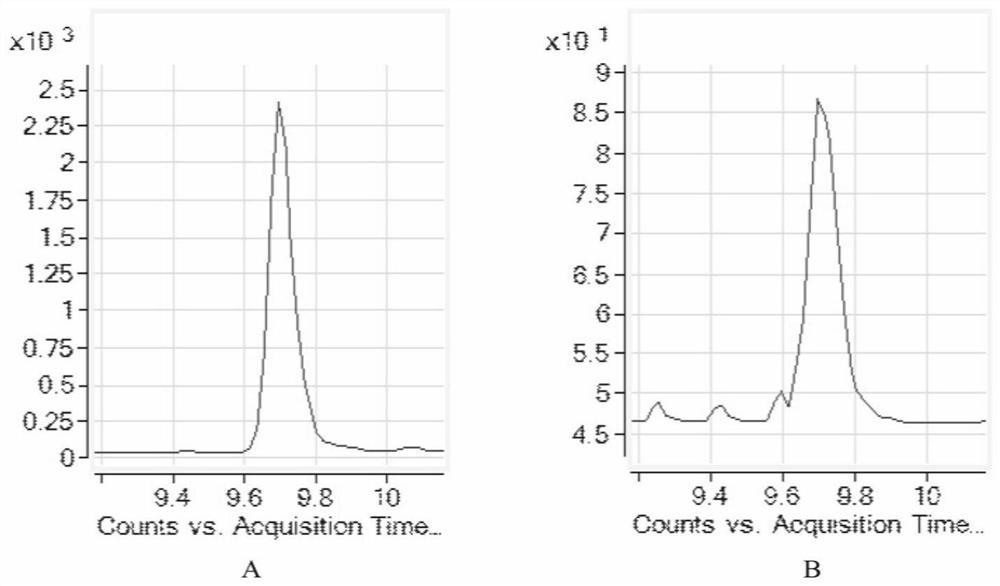Penicillium fimbriatum strain RA51 and application thereof
A technology of Penicillium vermiformis and RA51, applied in the field of microorganisms, can solve the problems of large loss of nutrients, difficulty in large-scale production, unstable detoxification effect, etc. Effect
- Summary
- Abstract
- Description
- Claims
- Application Information
AI Technical Summary
Problems solved by technology
Method used
Image
Examples
Embodiment 1
[0049] Example 1: Obtainment of Penicillium filtrates strain RA51
[0050] 1. Isolation of Penicillium difficile strain RA51
[0051] Soil samples were collected from Zhoushan Beach, Zhejiang Province, and 5 g of soil samples were weighed and placed in 30 mL of sterile saline, stirred and mixed, so that the microorganisms in the soil were suspended in the water and allowed to stand for 1 h. According to the inoculum amount of 1‰, take the soil suspension and inoculate it in the liquid medium containing FB1 for the primary screening, so that the final concentration of FB1 is 500ppb. Red Bengal and streptomycin were added to the primary screening medium to inhibit the growth of actinomycetes and bacteria. Under the conditions of 30℃, 160r / min, after culturing in shake flasks for 48h, transfer to the primary screening liquid medium according to the inoculum amount of 1‰, and continue to cultivate for 48h, and transfer for three consecutive times. Finally, dilute the supernatant...
Embodiment 2
[0071] Example 2: Preliminary determination of detoxification substances of fumonisins by Penicillium fibriformis strain RA51
[0072] There are two main ways to remove fumonisins by microorganisms, one is adsorption and binding, and the other is degradation and transformation. Adsorption binding is the adsorption of toxins by the cell wall or the main components of the cell wall, such as polysaccharides and peptidoglycan, and is a reversible biological process. Degradation and transformation is a chemical reaction process in which microorganisms degrade or convert toxins through enzymatic reactions to form non-toxic or low-toxic products. Therefore, the distinction between degradation transformation and adsorption binding is the premise to understand the mechanism of fumonisin degradation by Penicillium fumonis.
[0073] 1. Cultivation of Penicillium difficile strain RA51
[0074] The Penicillium difficulum strain RA51 obtained from the initial screening was inoculated on t...
Embodiment 3
[0086] Example 3: The effect of fermentation conditions on the ability of Penicillium fibroblasts strain RA51 to degrade fumonisin FB1
[0087] 1. Degradation effect of fermentation products on FB1 at different culture temperatures
[0088] Inoculate Penicillium difficile strain RA51 in PDB medium at 28°C, 150r / min, after culturing for 7 days, the concentration of conidia obtained is 10 6 cells / mL of bacterial suspension. Under the optimal culture conditions, the bacterial suspension was inoculated into the fermentation medium at a volume ratio of 5%, and the culture temperature was set at 20°C, 25°C, 30°C, 35°C, 40°C, and 45°C, respectively. 160r / min, cultured for 6d to obtain fermentation products. Add FB1 to the fermentation product to make the final concentration 500ppb, and mix well. After co-incubating at 28°C and 160r / min for 72h, the concentration of FB1 in the fermentation products of Penicillium fugustum was detected by HPLC-MS, and the degradation rate of FB1 by ...
PUM
 Login to View More
Login to View More Abstract
Description
Claims
Application Information
 Login to View More
Login to View More - Generate Ideas
- Intellectual Property
- Life Sciences
- Materials
- Tech Scout
- Unparalleled Data Quality
- Higher Quality Content
- 60% Fewer Hallucinations
Browse by: Latest US Patents, China's latest patents, Technical Efficacy Thesaurus, Application Domain, Technology Topic, Popular Technical Reports.
© 2025 PatSnap. All rights reserved.Legal|Privacy policy|Modern Slavery Act Transparency Statement|Sitemap|About US| Contact US: help@patsnap.com



